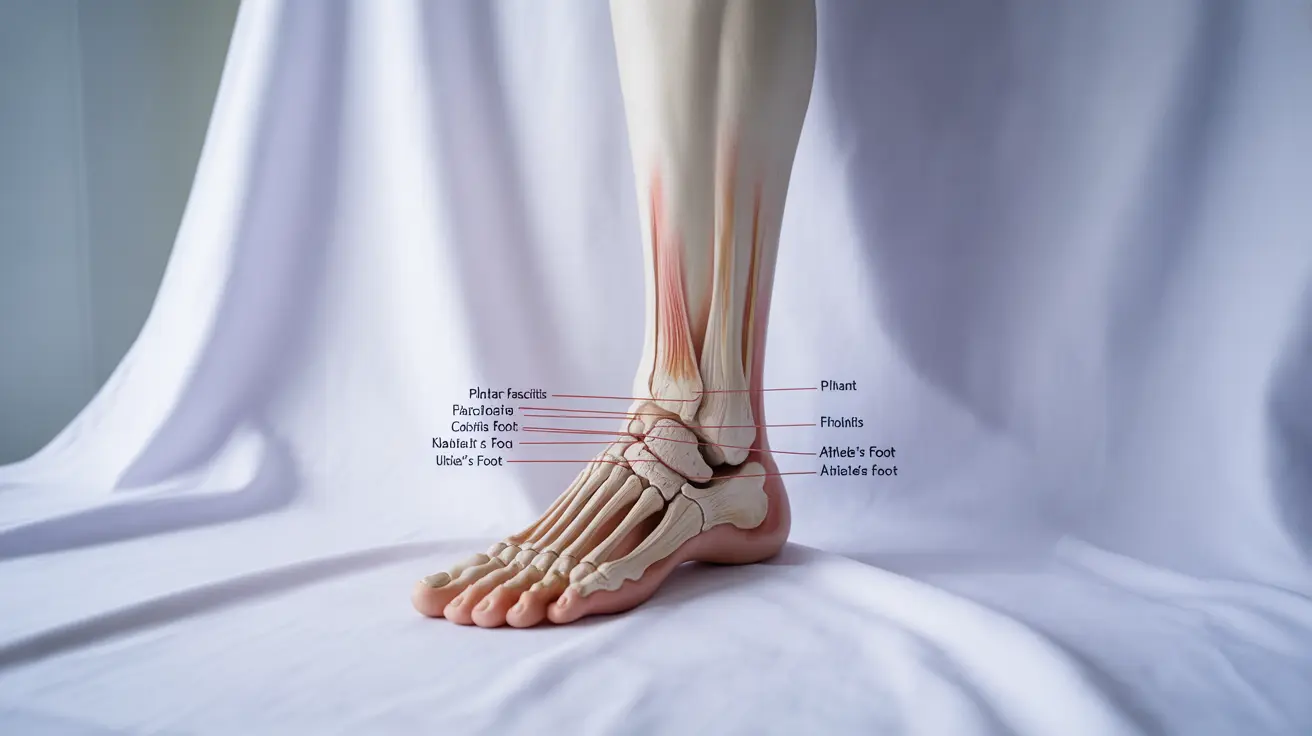Maintaining good foot health is crucial for overall well-being and mobility. Our feet bear the weight of our daily activities, yet they're often overlooked until problems arise. Understanding common foot conditions, proper footwear selection, and preventive care can help you avoid discomfort and maintain healthy feet throughout your life.
This comprehensive guide explores essential aspects of foot health, from managing common conditions to choosing appropriate footwear and implementing effective care routines.
Understanding Common Foot Conditions
Athlete's Foot Prevention and Care
Athlete's foot is a fungal infection that typically develops between the toes and on the soles. The condition thrives in warm, moist environments and can cause intense itching, burning, and peeling skin. Prevention involves keeping feet dry, wearing breathable shoes, and using antifungal powder when necessary.
Ingrown Toenails
Ingrown toenails occur when the nail's edge grows into the surrounding skin, causing pain and potential infection. Proper nail trimming techniques and wearing shoes with adequate toe room are essential preventive measures. Early intervention can prevent complications and reduce the need for medical procedures.
Managing Heel Pain Conditions
Understanding Plantar Fasciitis
Plantar fasciitis involves inflammation of the thick band of tissue connecting your heel to your toes. This condition typically causes sharp heel pain, especially during the first steps of the day. Regular stretching exercises, proper arch support, and maintaining a healthy weight can help prevent and manage this condition.
Heel Spurs and Treatment
Heel spurs are calcium deposits that form on the underside of the heel bone. While not all heel spurs cause pain, they can contribute to chronic discomfort. Treatment options include orthotic devices, physical therapy, and in some cases, corticosteroid injections.
Footwear Selection and Care
Choosing the Right Shoes
Proper footwear is fundamental to foot health. Look for shoes with adequate arch support, cushioning, and enough room in the toe box. Consider your foot type and daily activities when selecting shoes, and replace them regularly when they show signs of wear.
Workplace Foot Protection
If your job requires long periods of standing or walking, invest in supportive shoes with shock absorption. Consider using cushioned insoles and taking regular breaks to rest your feet. For industrial settings, ensure compliance with safety footwear requirements.
Preventive Care and Maintenance
Daily Foot Care Routine
Establish a regular foot care routine that includes washing and thoroughly drying your feet, moisturizing (avoiding between toes), and inspecting for any changes or concerns. Pay special attention to any cuts, blisters, or discoloration.
Exercise and Stretching
Regular foot exercises can strengthen muscles and improve flexibility. Simple exercises like toe curls, ankle rotations, and arch stretches can help maintain foot health and prevent common problems.
Frequently Asked Questions
What are the symptoms of athlete's foot, and how can it be prevented?
Athlete's foot symptoms include itching, burning, peeling skin, and redness between toes or on soles. Prevention includes keeping feet dry, using antifungal products, wearing breathable shoes, and avoiding walking barefoot in public wet areas.
How can I choose the right shoes for maintaining good foot health?
Select shoes with proper arch support, adequate toe room, and good cushioning. Shop for shoes late in the day when feet are slightly swollen, try both shoes on, and walk around before purchasing. Consider your specific foot type and intended activities.
What are the best ways to treat and prevent ingrown toenails?
Prevent ingrown toenails by cutting nails straight across, not too short, and avoiding tight shoes. For treatment, soak feet in warm water with Epsom salt, keep the area clean, and see a podiatrist if infection develops.
How can I manage heel pain at home, and when should I see a doctor?
Manage heel pain with rest, ice therapy, proper stretching, and supportive footwear. See a doctor if pain persists beyond a few weeks, becomes severe, or is accompanied by swelling or inability to bear weight.
What are the key differences between plantar fasciitis and heel spurs, and how are they treated?
Plantar fasciitis causes pain from tissue inflammation, while heel spurs are bone growths. Plantar fasciitis typically causes morning pain that improves with movement, while heel spur pain may be more consistent. Both conditions can be treated with stretching, orthotics, and proper footwear, though specific treatment plans may vary.




